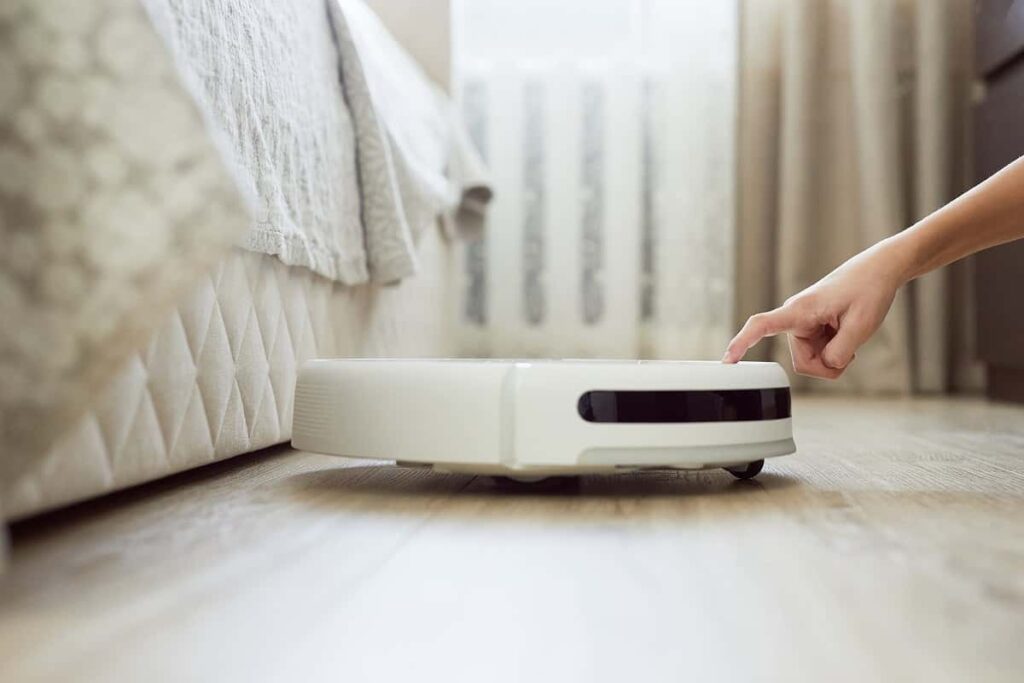The Best Air Purifier Technology Known to Man
Table of contents

The world is a strange place. While most of you reading this sit in your comfortable chairs thinking about all your first world problems, almost half the world lives on less than $2.50 a day. Those people understand the value of money far better than we do, and they’re likely to spend it on acquiring a steady supply of food and clean water. It’s that whole Maslow’s hierarchy of needs thing that we learned in Sociology 101:

After food and water are sorted, you’re supposed to start working on things like securing a steady flow of money, finding a mate, and trying to attain some semblance of self-esteem. For those of us in the first world, we’ve blown past all that and now we’re focused on things like how to make our pets smarter and trying to understand how our 401K works. We’re also quite obsessed with our health as well, and all that pollution that’s being generated by the Chinese sweat shops that produce $300 intelligent dog food bowls are triggering our allergies. Ever wonder why people in Africa never complain about allergies? Neither have we, but the fact is that indoor air purification is valued at between $11-14 billion depending on who you ask. We decided to take a look at the latest and greatest air purification technology out there to see what’s happening.
An Air Purifier Powered by Nanotechnology
An earlier iteration of the company, Transformair, was founded in 1994, but that turned into Molekule in 2014. With its fancy new name, San Francisco startup Molekule has taken in $13.35 million in funding so far from investors that include technology giant Foxconn (TPE:2354). Molekule’s most recent Series A round of $10.1 million just closed several weeks ago bringing this startup onto our radar. Molekule is using “nanotechnology” to break down and completely eliminate pollutants on a molecular level, something that this family-run company has been working on for more than 20 years. The end result is an air purifier that they claim is the most effective on the market. There are quite a few “air purification technologies” on the market already mind you, with some common ones as follows:
- HEPA – (High Energy Particulate Air) – Type of air filter that meets a standard dictated by the U.S. Department of Energy. Must remove 99.97% of particles that are 300 nanometers or larger.
- Ionic filters – Negatively charged ions attract particles in the air and make them heavy so they fall to the floor and Consuela can vacuum them up later
- Electrostatic precipitators – First marketed by Raytheon in 1954, this is air filtration by using static electricity. Often used in smoke stacks, this method consumes lots of energy.
- Ultraviolet Light – Kills bacteria and pathogens but doesn’t clear the air of gases, fumes, or any sorts of plants you like to smoke
- Activated carbon – Extremely porous form of carbon that absorbs large amounts of contaminants. Filter needs to be replaced often.
That was starting to get really boring, so let’s talk about the exciting technology used by Molekule which is called “Photo Electrochemical Oxidation” or PECO and it can destroy pollutants 1000 times smaller than traditional HEPA filters. This is accomplished by a nano-coated filter that is excited by light, creating a photocatalytic reaction that breaks down pollutants at a molecular level. The pollutants are literally destroyed in the process which is something few air purifiers do at the moment. It also looks pretty nice too:

It’s probably safe to say that this is the best air purifier technology available today for consumers, and if you want to pick one up it will set you back $799 plus recurring costs for filters running an additional $99 a year. If that’s a bit too steep for your clean air budget, have a look at this next air purifier.
Update 02/26/2020: Molekule has raised $58 million in Series C funding to continue building their robust portfolio of indoor air quality solutions. This brings the company’s total funding to $96.4 million to date.
Filterless Air Purifiers Based on NASA Tech
Our next company isn’t a startup, but their cool looking air filter is based on technology used by NASA for growing plants in space. The problem they faced was that plants that grow fruits and vegetables emit ethylene gas which causes ripening to happen too quickly in a closed environment. Ethylene can easily pass right through HEPA filters, so NASA came up with a solution that doesn’t even use filters. Instead, it uses a “unique nanotechnology” to destroy pathogens at a molecular level just like Molekule. The air purifier uses a densely packed matrix of glass tubes that will oxidize even the smallest particles on contact. Weighing in at 9 lbs, it consumes the same amount of power as a 60 watt light bulb and looks pretty slick:

The same technology that is contained in the air filter seen above is also used by a whole slew of Fortune 500 companies and more than 70 wineries across the country. The idea is that these filters remove airborne pathogens that cause food to spoil. One Whole Foods distributor claims that Airocide’s technology saves them $3-4 thousand dollars a month. That sleek-looking unit you see above will run you $599 with a replacement filter reaction chamber that takes 30 seconds to change costing you an additional $109 a year.
A Portable Air Purifier
While researching air purifier technology, we came across one other air purifier concept called Oxie which is the first “smart, wearable, air purifier that’s sleek enough to fit under your shirt collar“. What sort of tool would think it’s a good idea to walk around with one of these around their neck?

Fortunately, that idea seems to have died a quick death, but if you’re still inclined to be “that guy”, just buy one of the below air purifiers from Wynd along with a piece of string and you can accomplish pretty much the same thing:

Founded in 2014, Silicon Valley startup Wynd has taken in $2.5 million in seed funding to develop a portable air purifier that creates “bubbles of fresh air”. The Chinese fellow who founded the company started out on Kickstarter and pre-sold more than $600,000 worth of these devices which sold for around $129. There’s also an “air quality tracker” that you can clip onto your jacket and then people around the world can share data about air quality. You can pick up a Wynd portable air purifier on Amazon today for $199. A filter will last about 3 months before you need to buy a replacement for $10 a pop so that’s about $40 a year in recurring costs.
Update 08/13/2017 – The good folks at Molekule reached out to us about how their technology differs from that offered by Airocide. They went on to say:
Airocide purifier’s tech is PCO, which is an earlier generation and much less efficient version of Molekule’s PECO. Below you can see graphs that Dr. Goswami (Molekule’s chief scientist) presented from his research, at the IAQA Annual Meeting. As you’ll see, Molekule outperforms their tech by orders of magnitude.
And here are the graphs:

You can’t put a price on your health so based on the above comments we’d have to say Molekule comes out ahead here which makes sense given their higher price point.
Conclusion
In 2010, the 50 million Americans who suffer from “nasal swelling” as a result of allergies spent $17.5 billion on health costs. If all those Americans bought one of these air purifiers, then we could take all that excess cash and begin helping people in other countries – like Africa – deal with their allergies. Technology is truly making the world a better place.
Sign up to our newsletter to get more of our great research delivered straight to your inbox!
Nanalyze Weekly includes useful insights written by our team of underpaid MBAs, research on new disruptive technology stocks flying under the radar, and summaries of our recent research. Always 100% free.















http://www.bridair.com this new tech best all of the above. No more paying for filters!